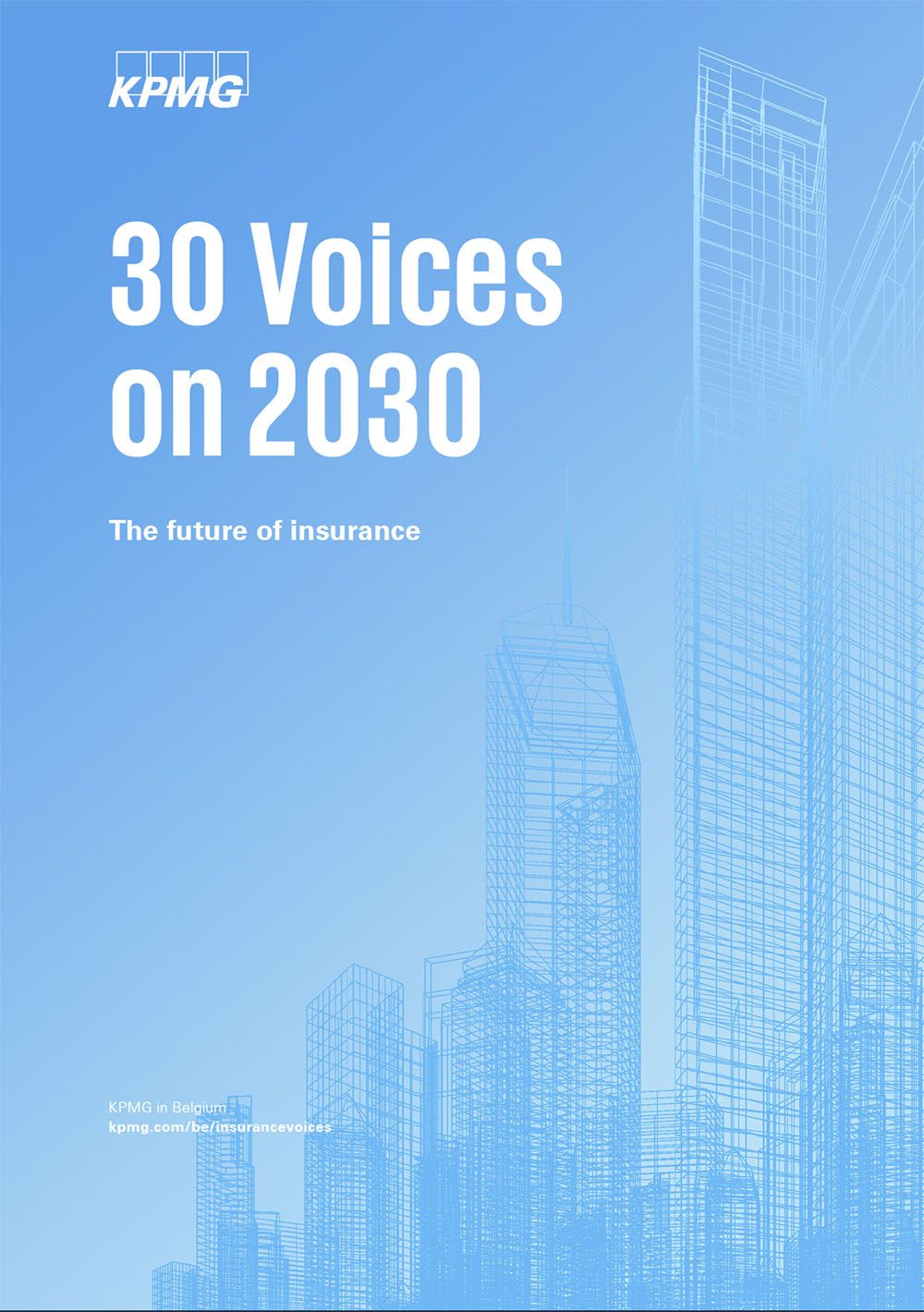Between 2000 and 2022, the number of insurers had already declined. Looking back from 2030, that trend only seems to have intensified. More than ever, the Belgian market is in the hands of only a few insurance companies. They remained strong because they knew how to adapt. But how, wonders Laurent Feiner.
Over the past decade, insurers faced competition from unexpected quarters, for example, from technology companies outside the industry. Companies like Amazon suddenly allowed people to compare fire insurance policy offerings. This was a prime example of a company you never thought would ever compete with traditional insurers.
On top of that, the insurance industry went through a crisis in the early 2020s, including the COVID-19 pandemic and the flooding in Wallonia in July 2021. All this raised awareness among insurers today, anno 2030, of the need to be there for their policyholders, and the need to adapt to remain relevant. The objective being not just to compensate damage, but also prevent and resolve it, through all kinds of services.

Laurent Feiner
CEO of DECAVI
More and more prevention
On the one hand, the insurance sector has increasingly become one of prevention, both for companies and individuals. Something that already started in 2022, for example with free coaching, to increase the well-being of employees to prevent burnout. Or with Liberty Rider, an app proposed by a few insurers (Ethias, P&V, Vivium) with a GPS that warns motorcyclists about dangerous turns and automatically notifies the emergency services if they lose their balance and overturn with their motorcycle.
Prevention has become increasingly important in recent years. Everyone gains. The insurer has to pay less compensation, policyholders suffer less damage the company remains operational.
On the other hand, policyholders only take preventive measures after they have suffered a significant loss. To encourage them to apply a prevention policy, without having first experienced a loss, you have to nudge them in the right direction. Today in 2030, insurers are taking steps so that contracts stipulate a guarantee becomes invalid if the insured party has not taken certain preventive measures.
More and more assistance
Insurers have also become more and more socially engaged in recent years. They have become a very important part of the solutions to many social problems we face in 2030. Climate change, an aging population, etc. To this end, companies offer all kinds of assistance services, the first examples of which we already saw in 2019, such as Doctors Online by AXA, a service that allows you to have a doctor’s consultation through video.
At the same time, insurers are increasingly offering help to repair damage with services, the first of which we saw emerge recently. There is Respo Repair Solutions, in close cooperation with AG Insurance, where a repairer comes to fix any damage after a claim. Other examples are Jaimy by Belfius and Fixiteasy by P&V, two digital platforms that put private individuals in touch with professionals for renovations and repairs.
The reason we see many more such services today in 2030 is because insurers are in demand. They want to attract new customers and retain existing ones. They also look to reduce costs and no longer have to play on price. They hope to differentiate themselves as insurers with services that the competition does not have.
The right products to the right customers
More than ever, to stay strong as an insurer, you must also offer the right products to the right customers, with insurance policies that best fit their needs. To do this, insurers have had to use quality customer data in recent years, without falling into hyper-segmentation, where they no longer want to cover the less-attractive risks.
Therefore, we have had to set limits on customer segmentation and the use of data, using regulations to create a level playing field on which competition could play optimally. The only problem was that insurers, policyholders, and brokers already had to comply with so many regulatory requirements by 2022. What we needed was smart regulation.
What we needed was smart regulation

Not against, but together with the broker
How does the insurance broker fit into this whole transition, I hear you thinking. Well, he or she still plays a crucial role in the ecosystem of services offered by the insurer. But the broker has also had to adapt significantly. In life insurance, for example, brokers became more and more of a wealth advisor. Non-Life, in turn, became so comprehensive that brokers no longer know all insurance possibilities. Although they are independent, most of them work only with a few insurers.
Finally, insurers have learned to better communicate what they can offer their clients. For years, for example, they focused only on the returns on their life insurance policies. While those policies offered many other assets, for example, they cover different risks. In 2030, insurers will explain many more aspects of their offer. To achieve that they will use all channels and platforms on which their customers are active. Yes, even via TikTok and in the Metaverse, if their customers are looking for information there.
About the interviewee
Laurent Feiner is a financial journalist, who has been writing for Trends since 1987, specializing in the insurance sector. In 1991, he founded DECAVI, an organization that has been informing insurance professionals about the insurance industry through newsletters, market studies, and a variety of events. The organization also presents the DECAVI Insurance Trophies to recognize the best products offered in various categories of insurance.

Voices on 2030: The Future of Insurance
Discover more perspectives from the industry’s most inspirational and imaginative leaders.
Download full report ⤓
